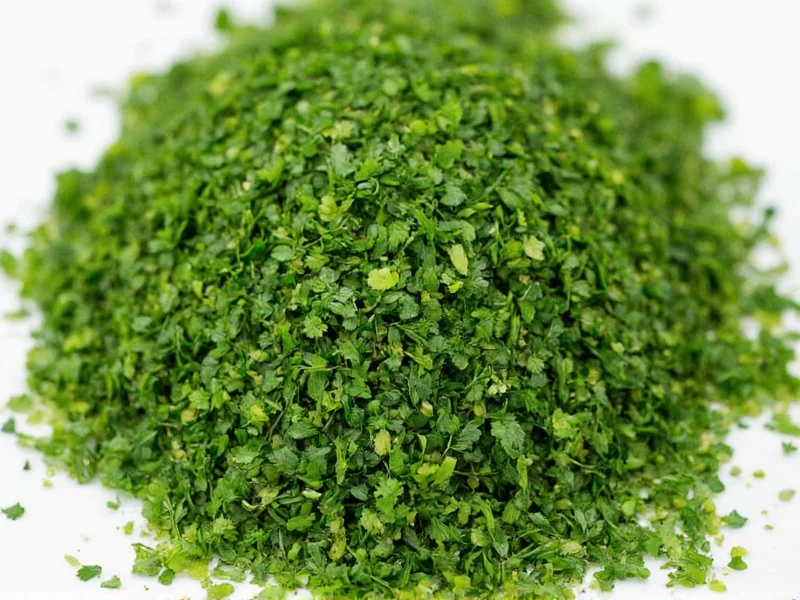Understanding coriander terminology is crucial before finding substitutes. In the United States, "coriander" refers to the seeds while the leaves are called cilantro. In the UK, Australia, and many other countries, "coriander" describes both the seeds and leaves, with "fresh coriander" specifying the herb. This regional difference explains why many "what is coriander substitute" searches yield confusing results.
Substituting Fresh Coriander (Cilantro Leaves)
When your recipe calls for fresh coriander leaves (what Americans call cilantro), you need a herb that matches its bright, citrusy flavor with a slight peppery note. The ideal substitute depends on your dish's cuisine and required flavor intensity.
Parsley serves as the most accessible fresh coriander substitute in most kitchens. Flat-leaf (Italian) parsley works better than curly parsley due to its stronger flavor. Use equal parts parsley plus a few drops of lime juice to mimic coriander's citrus notes. This combination works well in salsas, guacamole, and as a garnish.
Culantro (also called Mexican coriander or sawtooth herb) offers the closest flavor match but has a stronger taste. Use half the amount of culantro compared to fresh coriander. This substitute shines in Caribbean and Latin American dishes where it's commonly used.
Other viable fresh coriander leaf substitutes include:
- Basils (especially lemon or lime varieties) for Southeast Asian recipes
- Root vegetable greens like carrot tops or radish greens in a pinch
- Dill for fish dishes where coriander's citrus notes complement seafood
Substituting Ground Coriander Seeds
Ground coriander seeds have a warm, nutty, slightly citrusy flavor distinct from the fresh leaves. When seeking a ground coriander substitute, focus on spices with similar warm, citrus-tinged profiles.
Cumin provides the most accessible ground coriander substitute with its earthy warmth. Use ¾ teaspoon cumin for every 1 teaspoon of ground coriander. Add a pinch of lemon zest to restore the citrus element missing in cumin. This combination works particularly well in chili, taco seasoning, and curry blends.
Garam masala serves as an excellent pre-mixed substitute in Indian recipes. Use ¾ teaspoon garam masala per 1 teaspoon ground coriander. Since garam masala already contains coriander among other spices, this swap maintains authentic flavor balance.
For more precise ground coriander seed replacements, try these custom blends:
| Substitute Blend | Ratio | Best For | Flavor Notes |
|---|---|---|---|
| Cumin + Cardamom | 3:1 | Middle Eastern dishes | Earthy with floral notes |
| Fennel + Coriander Seed | 1:1 | Mediterranean recipes | Sweeter, anise-like flavor |
| Curry Powder | ¾:1 | Indian & Thai curries | Complex, slightly hotter |
| Caraway + Lemon Zest | 2:1 | European dishes | Earthy with citrus brightness |
Choosing the Right Substitute by Cuisine
Understanding regional cooking traditions helps select the most appropriate coriander substitute. What works in Mexican cuisine might clash in Indian dishes.
Mexican & Latin American recipes relying on fresh coriander (cilantro) benefit most from the parsley-lime combination. Avoid stronger substitutes like culantro unless you want intensified flavor. For ground coriander in taco seasoning, cumin provides the most authentic replacement.
Indian & Middle Eastern dishes using ground coriander seeds require more nuanced substitutes. The cumin-cardamom blend maintains the warm spice profile essential to these cuisines. In curries, garam masala works better than individual spices since it preserves the complex flavor balance.
Southeast Asian recipes often use fresh coriander as a finishing herb. Here, Thai basil or mint provides better flavor harmony than parsley. For ground coriander in spice pastes, a touch of turmeric with cumin creates acceptable depth.
Creating Custom Coriander Substitute Blends
For frequent cooking needs, prepare these shelf-stable blends:
Universal Fresh Coriander Replacement: Mix 1 cup chopped flat-leaf parsley with 2 tablespoons chopped mint and 1 teaspoon lime zest. Store in a covered container with damp paper towel for up to 3 days.
All-Purpose Ground Coriander Blend: Combine 2 tablespoons cumin, 1 tablespoon cardamom, and 1 teaspoon lemon zest powder. Store in an airtight container for 2 months. Use 1½ teaspoons of this blend per 1 teaspoon ground coriander.
Remember that no substitute perfectly replicates coriander's unique flavor profile. The key to successful substitution lies in understanding why coriander works in your recipe and choosing a replacement that fulfills the same culinary function.











 浙公网安备
33010002000092号
浙公网安备
33010002000092号 浙B2-20120091-4
浙B2-20120091-4